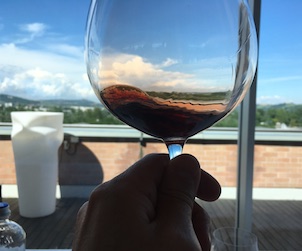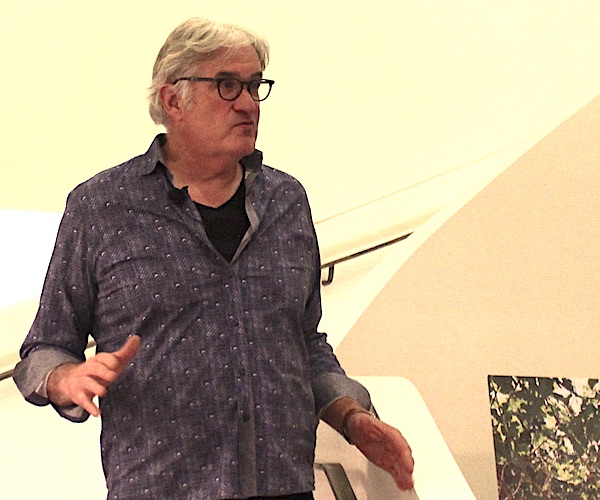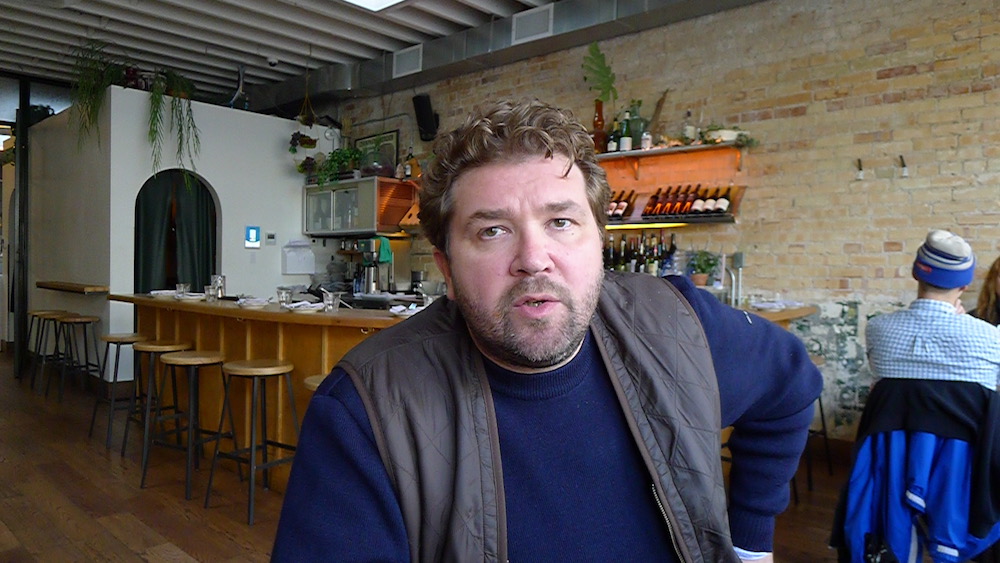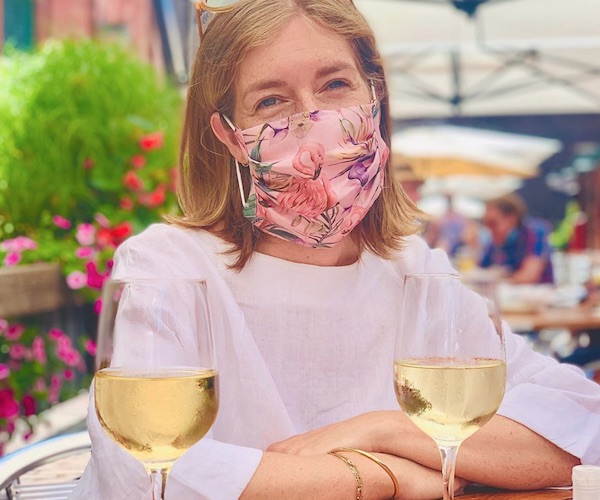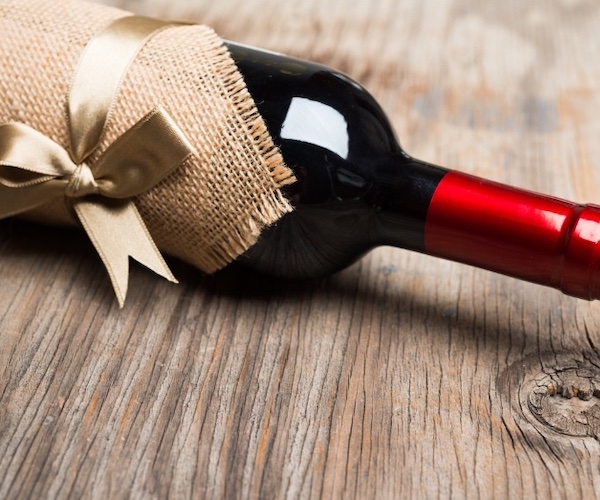Malcolm Jolley looks back to an afternoon in Italy.
Andrea Delpiano apologized for leaving. He had an appointment at three back at the winery. I told him I didn’t mind, and I meant it. He was being polite, but I’m sure, as much as we enjoyed each other’s company, he was as relieved as I was that our time together was done. We’d spent the morning together, first in Alba to pick up his boss, Davide Rosso from his flat in town, and (of course) have a quick coffee and a cigarette (them). Then, we headedout to Serralunga for my official winery visit to Davide’s winery Giovanni Rosso, first to the fields, then in the cellar. Finally, he drove me back to Alba where we had a very good lunch at La Piola, on the piazza looking at the cathedral. It was two-thirty and he had to meet another journalist at the winery at three.
Hospitality with strangers is hard, for both the host and guest, and harder still when one party, in this case mostly Andrea, must use a second language. His English was good, which is why, I think Davide delegated his young winemaker Andrea to be my minder. But even still, his English was learned, not natural, and when he searched for words I tried my broken first year university Italian, and when that failed, as it often did, we both reverted to French, in which we were both more or less functional, since the Piedmontese, like the Canadese-Inglese, learn it from primary school on. So, the double burden of guest/host politesse and language barrier battle had tired us both out. Andrea downed his café, and said his goodbyes while I thanked him. No doubt he would take the twenty minute drive back into the hills to rest his mind, as I would take the rest of the afternoon, since I had missed a rendez-vous back at my hotel to go see a producer in Barbaresco with an Australian colleague.
I was alone on the piazza, at a table at good restaurant, La Piola, owned by the Ceretto wine family, with half a bottle of good Barbera d’Alba. I was going to be fine – more or less. I was, in truth, a bit of a mess. It was Friday, the last day of my stay in Alba to attend Nebbiolo Prima, the annual reveal of the newly released Barolo, Barberesco and Roero wines. I had landed at Milan, Malpensa, via Frankfurt from Toronto overnight, the Sunday morning before. I was picked up and rode a couple hours to town in the company of a colleague from Canada, one from Warsaw, and another from Seoul, and made it to Alba by about noon. The trip, then began with a lunch of a glass of Arneis and a plate of pasta alla pin (butter and sage), before I headed to the first of five organized winemaker’s dinners in Alba, then Roero, Barbaresco, Barolo and back in Alba. On the Monday, Tuesday, Wednesday and Thursday we began the days with a lecture on whichever wines we were going to taste, then began the process intense blind tasting; 80 wines a morning, and then more in the afternoon. And after it was all done, at 11 or 12 at night we, merry band of international wine journalists, would head to the local artisanal beer pub, for our down time to ‘relax’. I had reached the limit and would need a nap to get myself together for one last dinner with a producer and colleague that evening, before leaving early in the morning for home.
But first there was the matter of the glass of wine to pour from the bottle Andrea had ordered that sat in front of me. I came to be at the table because I was at the Fuori Citabiunda pub at 11 or 12 the night before, after a long dinner with several producers and lots of tasting. It was the last night out for the two dozen or so journalists from around the world who had gathered for Nebbiolo Prima. Andrea and Davide, happened to be there. There were recognized and introduced to me by my Swedish friend and colleague Anders Levander. “Go see them tomorrow,” Anders said in his best Max von Sydow accent. I took his advice. I’ve learned it’s a good idea to, and as it happened, although I had plans to visit a winery the next day, I had no way of getting there. It was a small family operation too, and they didn’t have time to pick me up, so I’d have to hire a car, which I had not done. The deal was sealed when Davide explained he lived in town and Andrea was picking him up to go to Serralunga in the morning. If I presented myself at the door of my hotel at the crack of ten, all would be taken care of. Wine journalists are not particularly known for their stoicism and grit (though their livers may disagree), and the path of least resistance had been laid before me in a Barbaresco-made IPA haze. The winery I emailed that morning to say I wouldn’t come was Sottimano, which happened to be name on the label of the bottle 2016 Barbera d’Alba that I was pouring my glass of wine from. I took a picture and sent it by text to Elena Sottimano, apologizing for not making it to the winery, but explaining that at least I was thinking of her and her family’s delicious wines.
* * *
Watch this month for a series of posts from my attendance at Nebbiolo Prima in May of this year. Here’s a quick hit, if your in the market for fancy Piedmontese wines right now. We tasted the 2014 Barolo’s which are from a cooler year, where it rained for much of September. They by and large showed it, but more often in a really pretty and elegant red fruit way that validates comparison between Nebbiolo and Pinot Noir. We tasted the 2015 Barberesco, which was from a hot and dry year (with global warming, perhaps we should calling hot summers “classic”), and they more often than not expressed it. Big black fruit flavours and gravelly tannins: the wines more often than showed really well. We also tasted the 2015 Roero, which when it was good, was on par with the Barberesco’s from the other side of the Tanaro River. The Roero’s are not yet consistently on the level of the their nearby Nebbiolo cousins, but this is as much a function of the relative newness of the DOCG, and factors in things like vine age. I’ll report more on all three DOCG’s, and some of the lovely people I met, or saw again, making wines in hills around Alba over the next few weeks.

